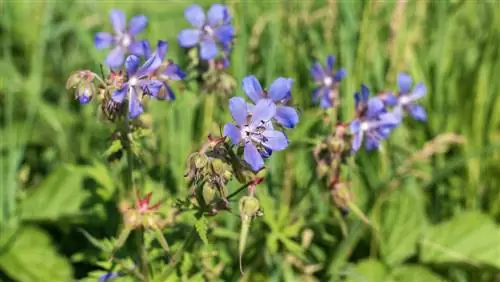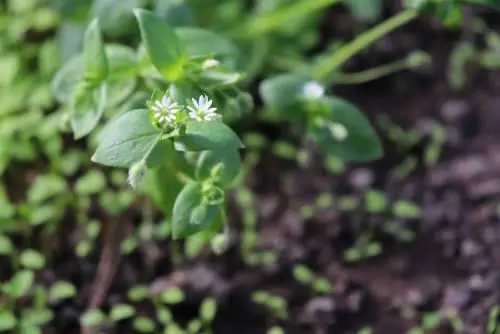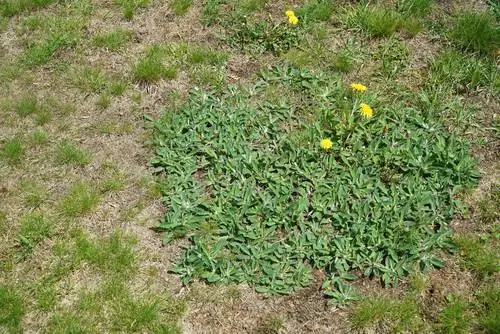- Author admin [email protected].
- Public 2023-12-16 16:46.
- Last modified 2025-01-23 11:22.
Cranesbill not only quickly displaces other plants in the garden, but can quickly become a nuisance weed in a well-kept lawn. The different species spread very differently - but the difficulty in combating them is common to all.

How to remove cranesbill from the lawn and prevent it from spreading?
Cranesbill in the lawn can be considered a weed if it spreads uncontrollably. Removal methods include regular mowing, deadheading, or pesticide application. To prevent the spread, the cut grass should be disposed of and not composted.
Is cranesbill a weed in the lawn?
Unfortunately there isno clear answer to this question While for some garden owners the cranesbill is a wonderful plant in the garden that can be used both as a flowering perennial and as a ground cover, others curse the vigorous plant as a weed and would do anything to remove it from the garden.
How to remove cranesbill from the lawn?
To remove cranesbills from the lawn, there areseveral options:
- Mowing: Regularity is absolutely important here, because cranesbill, especially the Ruprechtskraut variety, grows almost faster than you can see.
- Pruning out the plants: If you decide to use this option to get rid of geraniums in your lawn, you must make sure to remove all the roots.
- Application of pesticides
What all options have in common is that combating cranesbill in the lawn is a lengthy process that requires a high degree of patience.
Does cranesbill work against groundweed in the lawn?
Storksbill is an effective plant against ground greed. It acts, so to speak, as a plant opponent against unwanted weeds on the lawn and is particularly suitable when the groundweed spreads over a relatively large area. The varietyRozanne in particular is ideal for combating ground greed.
How can I prevent cranesbill from spreading in the lawn?
In order to prevent the spread of cranesbill, it is necessary todispose of the mown grassIf cranesbill keeps spreading in the garden, it may be because the grass is composted after mowing. This means that the seeds always have the opportunity to nest in the lawn via the air and spread quickly. Arefrain from composting of the crop is then absolutely necessary.
Tip
Storksbill as a ground cover
Perhaps you like the idea of designing an area in your garden so that it requires as little maintenance as possible? Then ground cover plants that don't have to be mowed even over large areas are a good choice. Certain species of the cranesbill genus are perfect as flat-growing, dense and compact ground cover instead of a lawn, for example the Caucasus cranesbill or the Pyrenean cranesbill.






